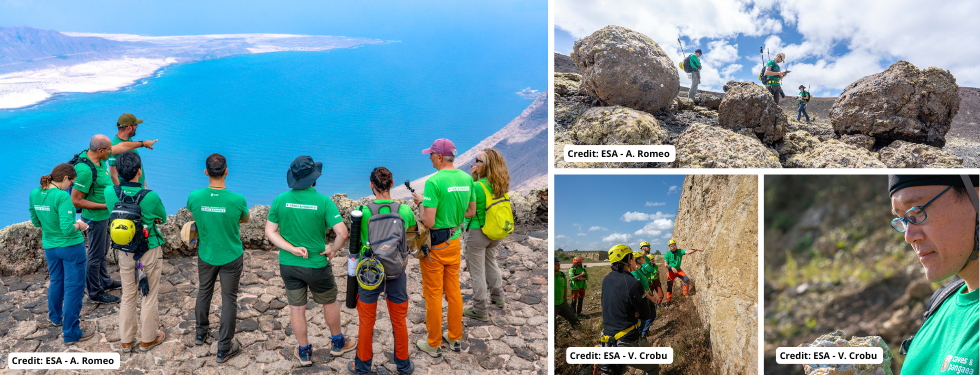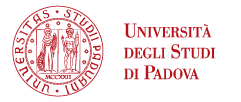From Earth to the Moon with PANGAEA training for astronauts

In preparation for future missions to the Moon, Mars, and other planetary bodies, it is essential to train astronauts to analyse landscapes, identify optimal exploration areas, and select scientifically valuable rock samples to bring back to Earth.
PANGAEA (Planetary Analogue Geological and Astrobiological Exercise for Astronauts), a program developed by the European Space Agency since 2016, trains astronauts in planetary geology skills. The seventh edition of the PANGAEA course was completed in September 2024 and consisted of three stages. The training started with an introductory session at the Bletterbach canyon in the Dolomites, followed by sessions at the Ries impact crater in Germany and on the volcanic island of Lanzarote. These real terrestrial environments closely resemble the Moon and Mars geological structures, making the training particularly effective.
The three astronauts who participated in the 2024 course are Rosemary Coogan from the UK, Arnaud Prost from France and Norishige Kanai from Japan. Their involvement brings the total number of astronauts trained since 2016 to 16 from four different space agencies (NASA, ESA, JAXA, and ROSCOSMOS). The distinctive aspect of the PANGAEA course, as explained by the astronauts in several articles on the ESA blog, lies in its occurrence in unique European locations, facilitating not only the exploration of Earth'sgeology but also the collaborative acquisition of indispensable skills crucial for future space missions to the Moon and beyond.

Two researchers affiliated with the Department of Geosciences of the University of Padova have deeply contributed since the first edition of the training: Prof. Matteo Massironi as Scientific Coordinator and Dr. Riccardo Pozzobon, as a classroom and field instructor and as science operations officer during geological traverses. This year, Dr. Anna Barbaro from the Department has assisted Prof. Massironi during the lecture on meteorites. Samples for the lecture were kindly provided by the Museum of Nature and Humans of the University of Padova, as well as from the private collection of Giorgio Tomelleri.
Dr. Francesco Sauro, who acted as Technical Director in all PANGAEA editions, is now also joining the University of Padova to teach in the international bachelor's degree of “Earth and Climate Dynamics”. PANGAEA instructors and experts belong to a range of European Universities, Research Institutions, Space Agencies and Companies, including: Institut für Planetologie Westfälische Wilhelms-Universität Münster (Germany), Laboratoire Planétologie et Géosciences CNRS Nantes Université (France), University of Edinburg (UK), Instituto de Geociencias IGEO CSIC-UCM (Spain), Norwegian Mining Museum (Norway), the European Astronaut Centre (ESA), Serco (UK), Miles Beyond Srl (Italy), Spaceclick Srl (Italy).
The training involves increasing levels of difficulty, culminating in exploratory sessions where participants provide scientific answers based on what they observe or the materials they collect, communicating via radio or with data-sharing tools (the Electronic Field Book) with instructors and scientists in a remote science backroom. During the 2023 and 2024 editions, the astronauts had the opportunity to test the Handheld Universal Lunar Camera (HULC), which NASA will use in the Artemis 3 mission to the Moon. This year, Rosemary Coogan, Arnaud Prost, and Norishige Kanai tested this camera, even using a 200 mm telephoto lens. HULC will be the first mirrorless camera for portable use on the lunar surface, capable of capturing sharp images in low light conditions. This will be especially useful at the Artemis III landing site near the Moon's South Pole, which has areas with permanent shadows.

“After seven editions, PANGAEA is considered an important training in planetary and field geology, thanks also to the contribution on this subject from researchers affiliated to the University of Padua, which has been involved in the training since the first edition” says Francesco Sauro, while Prof. Matteo Massironi is enthusiastic about the next steps in this training towards the lunar surface: “Now, with three PANGAEA instructors and one assistant from the Department of Geosciences, all of them already deeply involved in Solar System exploration, the University of Padua is becoming one of the leading universities in the future of human and robotic exploration of planetary surfaces.”
For more information please refer to the following article in Acta Astronautica: “Training astronauts for scientific exploration on planetary surfaces: The ESA PANGAEA programme”





